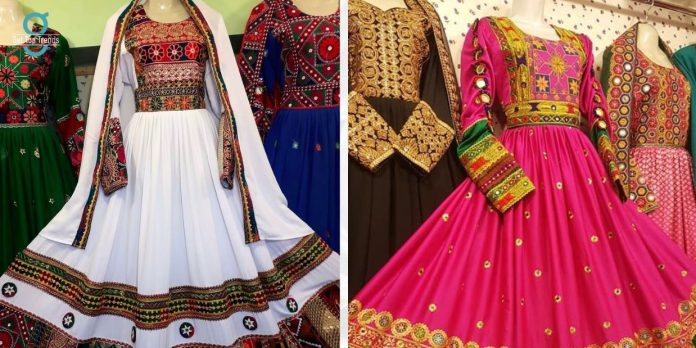Diversity is the essence of South Asia, a region that boasts a rich tapestry of cultures, each adorned with its unique set of traditions and customs. One of the most captivating aspects of this cultural mosaic is the cultural dresses that reflect the history, heritage, and identity of various communities.
In this blog post, we will delve into the vibrant world of South Asian cultural dresses. Let’s explore.

1. Balochi Attire: Elegance in Simplicity
The Balochi people, with their nomadic lifestyle, have a clothing style that is both practical and beautiful. Women wear vibrant dresses adorned with intricate embroidery, and men often opt for loose-fitting shalwar kameez paired with distinctive turbans.
The use of bright colors and geometric patterns makes Balochi attire a visual delight. Moreover, if you want to buy elegant traditional clothes, must visit Saqafat Khana and fill your wardrobe with a cultural lifestyle.
2. Sindhi Splendor: A Riot of Colors
Sindhi culture is synonymous with vibrant colors and elaborate embellishments. The traditional Sindhi dress for women, the “Sindhi Sari” or “Suthan Kameez,” is characterized by mirror work and vibrant embroidery. Men often wear the traditional “Sindhi Topi” (cap) and “Ajrak,” a colorful shawl.
3. Pashtoon Pride: Traditional and Timeless
The Pashtoon people take great pride in their traditional attire, which reflects their strong cultural identity. Men wear the classic “Perahan Shalwar” ensemble, while women opt for the “Firaq” dress. Intricate needlework and bold colors are key features of Pashtoon clothing, making it both distinctive and timeless.
4. Punjabi Panache: Celebrating Diversity
Punjabi attire is as diverse as the region itself. Men commonly wear the “Patiala Shahi” or “Dhoti Shalwar” with a matching kurta, while women showcase the vibrant “Punjabi Suit” with contrasting dupattas. The use of bright colors and elaborate embroidery mirrors the lively spirit of the Punjabi culture.
5. Siraiki Charm: Fusion of Tradition and Modernity
The Siraiki people seamlessly blend tradition with modernity in their clothing. Women often wear the “Siraiki Shalwar Kameez” with intricate embroidery, while men opt for simple yet elegant attire. The Siraiki culture’s unique blend of colors and patterns reflects the region’s historical significance.
6. Kashmiri Elegance: Where Beauty Meets Subtlety
Kashmiri attire is known for its grace and delicacy. Women adorn themselves in the exquisite “Pheran,” a loose-fitting gown, often embroidered with intricate designs. The use of vibrant colors and finely woven fabrics add to the charm of Kashmiri cultural dresses.
7. Rajasthani Royalty: A Splash of Royalty
Rajasthan, known for its royal heritage, boasts a distinctive style of clothing. Women wear the “Lehenga Choli” with vibrant colors and heavy embellishments, while men opt for the classic “Angarkha” or “Jodhpuri Suit.” Rajasthani attire truly reflects the regal history of the region.
8. Tamil Tradition: Draping Elegance in a Sari
Tamil culture, predominantly found in South India, celebrates the elegance of the sari. Women drape the “Kanjivaram” or “Banarasi Sari,” often paired with intricate jewelry. Men commonly wear the “Dhoti” with a traditional shirt, showcasing the simplicity and sophistication of Tamil attire.
Conclusion
The cultural dresses of South Asia are not just garments; they are a living expression of the region’s rich heritage and Diversity. Each attire tells a story, preserving traditions that have withstood the test of time. As we celebrate the beauty of Balochi, Sindhi, Pashtoon, Punjabi, Siraiki, and other traditional dresses, we embrace the cultural kaleidoscope that makes South Asia a captivating part of the world. Get more insightful and traditional updates on Get Top Trends.


